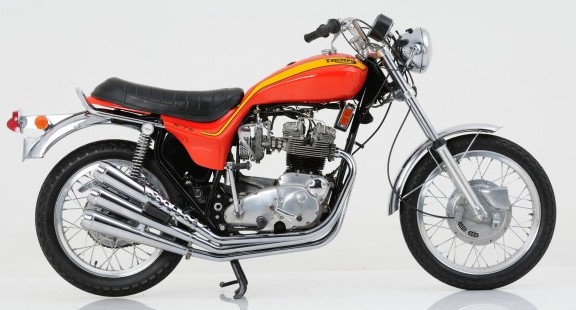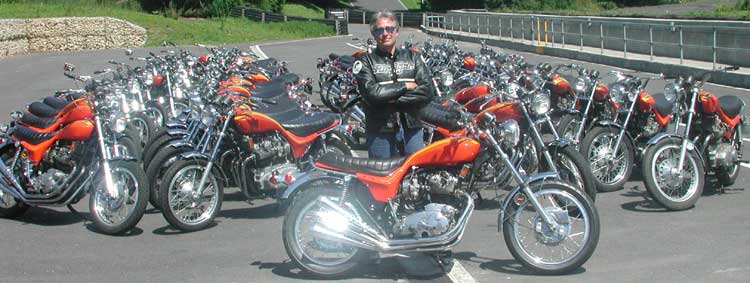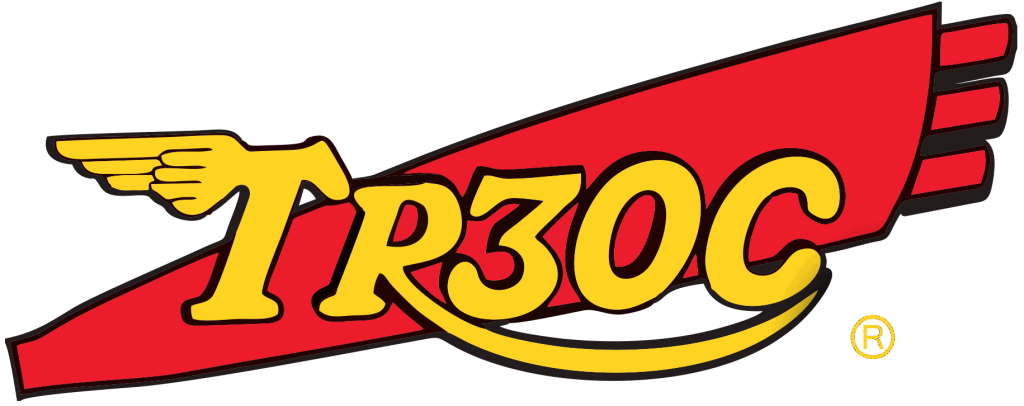Triumph X75 Hurricane (1973)
The Triumph X-75 Hurricane was a ‘factory special’ designed by Craig Vetter. The X-75 had swooping glass fibre bodywork, a three US-gallon petrol tank, lowered gearing and a distinctive triple exhaust on the right-hand side. It was ultimately released as a Triumph model in 1973, the BSA factory having closed its doors in late 1972.
In 1968, when the new BSA Rocket 3/Triumph Trident triples were shown to the American BSA-Triumph management, they were underwhelmed. They knew Honda had the CB750 coming along, and they felt the triple’s price was too high and that technical details (like vertically-split crankcases and pushrod ohv valve train) were far from “cutting edge”. However, they acknowledged that the bike was fast, and a sales team led by BSA Vice-President Don Brown decided to launch the bike by using a Rocket 3 to set some records at Daytona.

Brown felt that the BSA/Triumph triples needed a different look to succeed in the USA, and he engaged designer Craig Vetter to give the BSA A75 a customised face-lift, with a brief to make it “sleeker and more balanced”.
Vetter created the Triumph Hurricane in the summer of 1969 and in October he unveiled the prototype with “BSA” on the tank as the new ‘Rocket Three’. BSA USA President, Peter Thornton and his team were impressed, so Vetter’s bike was sent to the UK, but it arrived in England just as the BSA marque was about to end. At Umberslade Hall, the design was seen as too “trendy” by chief designer Bert Hopwood; but after very positive public reaction to the design when it appeared on the front of US magazine Cycle World in October 1970, the UK management changed their minds. They realised they had a large stock of obsolete BSA Rocket-3 parts that could now be turned into a premium-priced motorcycle.
Engineer Steve Mettam was given the job of supervising production for the 1972/3 season; and the Vetter BSA Rocket3 became the Triumph X75 Hurricane. 1,183 engines were put aside for X75 production. However, BSA was facing bankruptcy and the design went into a limited production run of 1200 as the Triumph X-75 Hurricane in 1972. In the end 1,154 machines were built of which only 40 were sold in the UK market.

Specification
Engine, as A75 with enlarged fins on cylinder head and black barrel
Three downpipes and reverse cone megaphone silencers
Transmission as A75
Front tyre, 3.25 x 19” Dunlop ribbed
Rear tyre, 4.25 x 18” Dunlop TT100
Brakes as 1971 models
Dry weight 444lb
Colour scheme Aztec Red with yellow reflective stripes
